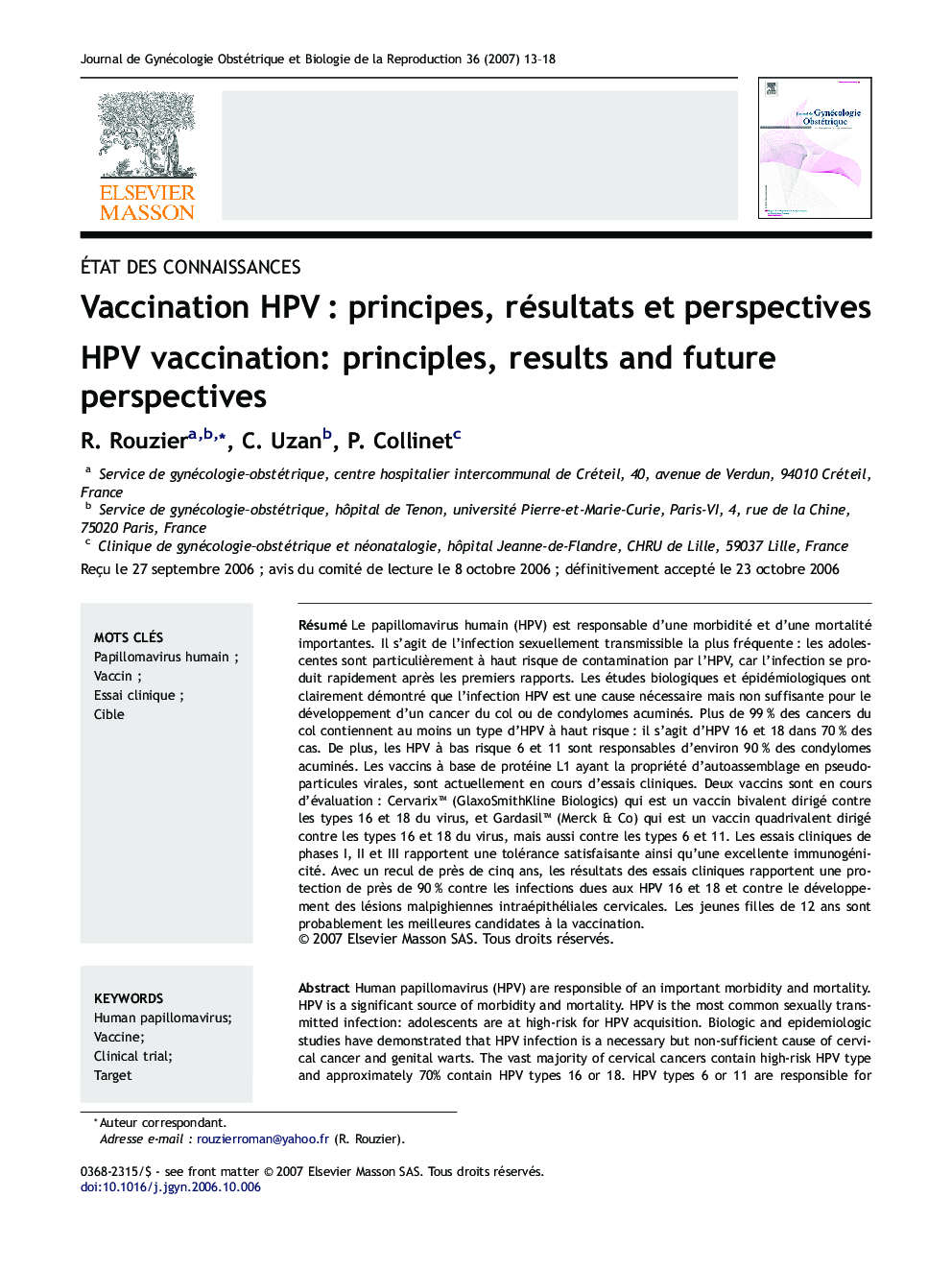| Article ID | Journal | Published Year | Pages | File Type |
|---|---|---|---|---|
| 3273881 | Journal de Gynécologie Obstétrique et Biologie de la Reproduction | 2007 | 6 Pages |
Abstract
Human papillomavirus (HPV) are responsible of an important morbidity and mortality. HPV is a significant source of morbidity and mortality. HPV is the most common sexually transmitted infection: adolescents are at high-risk for HPV acquisition. Biologic and epidemiologic studies have demonstrated that HPV infection is a necessary but non-sufficient cause of cervical cancer and genital warts. The vast majority of cervical cancers contain high-risk HPV type and approximately 70% contain HPV types 16 or 18. HPV types 6 or 11 are responsible for approximately 90% of genital warts. Thus, a vaccine that could prevent. Prophylactic vaccines based on the use of virus-like particles (VLPs) obtained by auto-assembly of L1 are under clinical trials. Two vaccines are currently evaluated: Cervarix⢠(GlaxoSmithKline Biologics), a bivalent vaccine against HPV 16 and 18, and Gardasil⢠(Merck & Co) a quadrivalent vaccine against HPV 16, 18, 6, and 11. Phase I, II and III studies have demonstrated that both vaccines are well tolerated and provide an excellent immunogenicity. With approximately 5-year follow-up, both vaccines have been effective in preventing persistent infection with targeted HPV types and in preventing cervical intraepithelial lesions. The optimal target for vaccination is probably 12-year-old girls.
Related Topics
Health Sciences
Medicine and Dentistry
Endocrinology, Diabetes and Metabolism
Authors
R. Rouzier, C. Uzan, P. Collinet,
